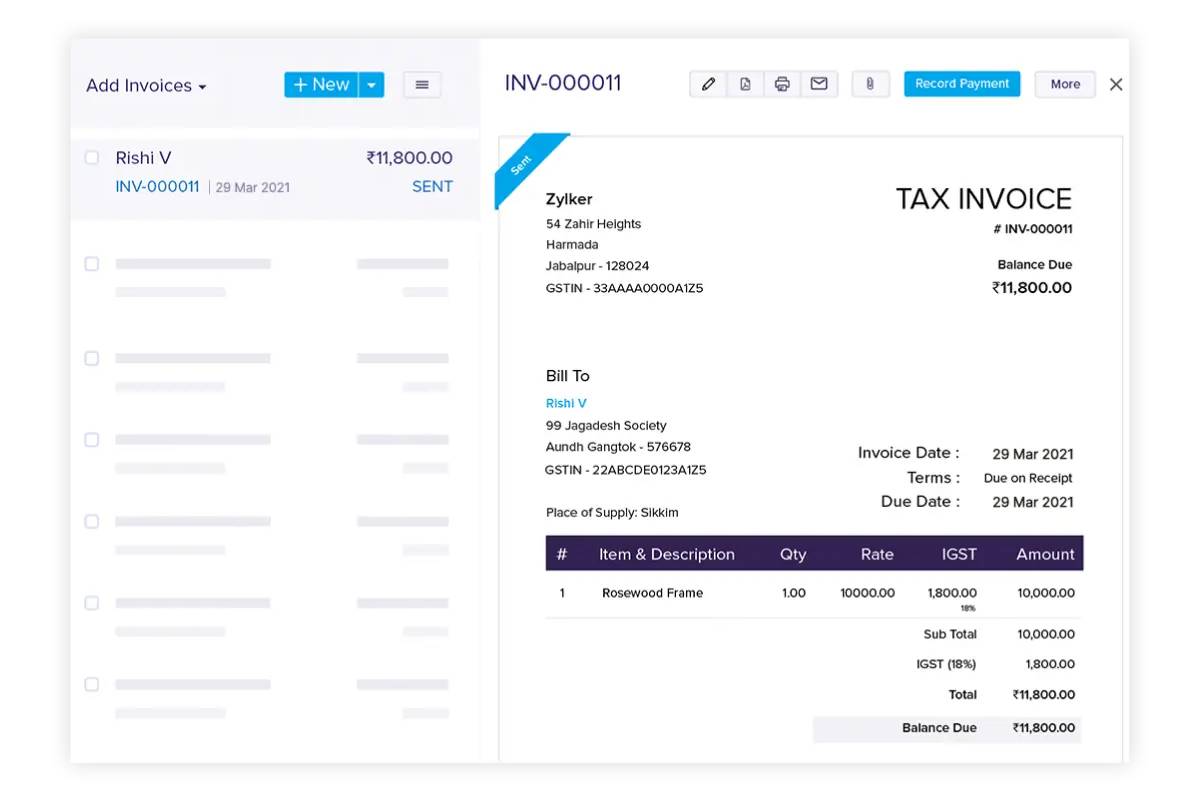
IR35 Explained: What Freelancers Need to Know
If you’re a freelancer in the UK, you’ve probably heard the term IR35 tossed around — often with a mix of confusion and frustration. And you’re not alone. Despite being around since 2000, IR35 rules still trip up even seasoned contractors.
So, what exactly is IR35? Why does it matter? And more importantly, how does it affect your freelance income, taxes, and how you work with clients?
This guide breaks it all down in plain English. Whether you’re working in tech, media, finance, or another freelance sector, you’ll come away with a solid understanding of off-payroll working rules, how to assess your status, and what steps you can take to stay compliant, without the jargon overload.
Let’s start from the top and work our way through the essentials you genuinely need to know.
What is IR35? A Simple Explanation
IR35 is a set of tax legislation designed to identify what HMRC calls “disguised employment.”
In simple terms, it’s meant to catch individuals who:
- Work like employees,
- Through a limited company or personal service company (PSC),
- But avoid paying employee taxes and National Insurance.
If caught by IR35, your earnings will be taxed like a regular employee’s income, reducing your take-home pay.
Where the term’ off-payroll working’ comes in
Off-payroll working is the newer term introduced by HMRC to describe the relationship governed by IR35. It refers to freelancers or contractors who invoice through a PSC, but their working relationship resembles full-time employment.
Why Was IR35 Introduced?
The goal behind IR35 is fairness.
HMRC wanted to stop people from using a company structure just to pay less tax, while still enjoying employee-like benefits such as long-term contracts, holiday pay (informally), or set hours.
Imagine this: Two people sit next to each other in the same office, doing the same job. One is a full-time employee, the other a contractor working through a PSC. The contractor pays less tax and National Insurance — that’s what IR35 aims to correct.
While that sounds reasonable in theory, applying it in practice has been anything but straightforward.
How Do IR35 Rules Work?

At the heart of IR35 is employment status. If you’re “inside IR35,” HMRC considers you an employee for tax purposes. If you’re “outside IR35,” you’re genuinely self-employed.
Here’s how that breaks down:
Inside IR35
- You pay income tax and National Insurance like an employee.
- You can’t claim the same range of expenses you normally would as a contractor.
- Your take-home pay is reduced significantly.
- From April 2021 (for medium and large private sector clients), the client is responsible for assessing IR35 status.
Outside IR35
- You’re considered genuinely self-employed.
- You’re taxed through your company (Corporation Tax + dividend payments).
- You can claim expenses like business travel, equipment, and training.
- You retain more flexibility and a higher net income.
Who Decides IR35 Status?
This is where things changed in recent years.
Pre-2021: The Contractor decides
Before April 2021, you, as the contractor, decided if a contract was inside or outside IR35.
Post-2021: Client decides
Now, for medium and large private sector clients, the responsibility sits with the client.
They must:
- Determine your IR35 status.
- Provide a Status Determination Statement (SDS).
- Be able to demonstrate reasonable care in making their decision.
For small companies, the contractor still decides.
What qualifies as a ‘small company’?
To be considered small, a client must meet two of the following:
- Annual turnover ≤ £10.2 million
- Balance sheet total ≤ £5.1 million
- ≤ 50 employees
Key Factors in Determining IR35 Status

HMRC looks at several elements — not just what’s in your contract but also how you work day-to-day.
Here are the three core tests:
1. Supervision, Direction, and Control
- Are you being supervised or directed by your client?
- Can they tell you when, where, or how to work?
If yes, this leans towards employment (inside IR35).
2. Substitution
- Can you send someone else to do the work?
- Is that allowed in your contract and in reality?
A genuine contractor should be able to provide a substitute.
3. Mutuality of Obligation (MOO)
- Is the client obligated to keep giving you work?
- Are you obligated to accept it?
If so, that’s a strong signal you’re functioning like an employee.
Other factors include:
- Provision of equipment (yours vs. client’s)
- Financial risk (do you invoice, fix errors at your own cost?)
- Integration into the client’s business (do you have a company email? Attend staff meetings?)
Why Freelancers Need to Pay Attention
Here’s the bottom line: IR35 can significantly affect your income and how you work.
Being wrongly assessed as inside IR35 could cost you thousands. On the flip side, ignoring the rules and getting caught can lead to penalties, backdated taxes, and interest, not to mention the stress.
Let’s break this down with a practical example.
A Freelance Developer’s Dilemma: Inside vs Outside IR35
Tom, a freelance app developer, lands a 12-month contract with a tech company.
- He works 9–5 at their office.
- They provide his equipment.
- He has a team email and is listed in the staff directory.
- He reports to a project manager.
Although Tom invoices through his PSC, his working pattern screams “employee.” He’s likely inside IR35.
If he continues without adjustment, Tom could:
- Owe income tax and National Insurance
- Be barred from claiming contractor expenses
- Risk penalties if investigated
Now, imagine Tom structures future contracts to:
- Work remotely
- Use his own equipment
- Have flexibility in hours
- Include a substitution clause
That positions him more clearly outside IR35 — a safer and more profitable arrangement.
What You Can Do to Protect Yourself
You can’t always control client decisions, but there’s a lot you can do to stay proactive:
1. Review Contracts Carefully
Get every contract reviewed by a specialist.
Look for:
- Clear substitution clauses
- Definitions around control and independence
- Absence of obligations for ongoing work
2. Work Like a Business, Not an Employee
Behave in ways that match the contract:
- Use your own email domain
- Don’t attend staff socials or performance reviews
- Avoid being listed on internal comms tools
3. Use an IR35 Contract Review Service
Specialist firms offer IR35 assessments that analyse your working practices and documentation. Some even provide insurance-backed reviews for added protection.
4. Speak to Your Clients
Many clients are risk-averse and may label roles “inside IR35” by default. Engage with them, explain your working model, and offer a mutual review.
5. Keep Clear Records
Maintain documentation showing your independence:
- Invoices
- Time logs
- Email communications
- Substitution offers (even if unused)
Common Misconceptions About IR35
Let’s clear up a few myths:
- “I’m using a limited company, so I’m safe.” Not true. HMRC looks at working practices, not just structure.
- “As long as the contract says I’m outside IR35, I’m fine.” Again, not true. If your day-to-day work contradicts the contract, HMRC will prioritise reality over wording.
- “IR35 only applies to public sector contracts.” It started in the public sector, but now applies to most private sector engagements too.
IR35 and Taxes: What’s at Stake?
If you’re found to be inside IR35:
- You pay employee NICs (12%–13.8%) and income tax on your fee
- You lose the ability to pay yourself via dividends
- You may be responsible for the employer’s NICs if the client doesn’t handle it
Outside IR35:
- You pay Corporation Tax (25%) and take home income through dividends and salary, often yielding a higher net income
That’s why getting your status right is critical.
Conclusion: Navigating IR35 as a Freelancer

IR35 isn’t going away, and while it can feel like a bureaucratic minefield, it doesn’t have to be. With the right knowledge, clear contracts, and proactive working practices, you can protect your income and keep your freelance lifestyle thriving.
Key takeaways:
- IR35 rules assess whether you’re a disguised employee
- “Inside IR35” means higher taxes and fewer deductions
- “Outside IR35” keeps your self-employed status intact
- Since 2021, clients (not freelancers) decide IR35 status — unless they’re small businesses
- How you work matters just as much as what your contract says
Final advice: Don’t guess your IR35 status. Get professional help, review your contracts, and ensure that your daily work life reflects your independence.


